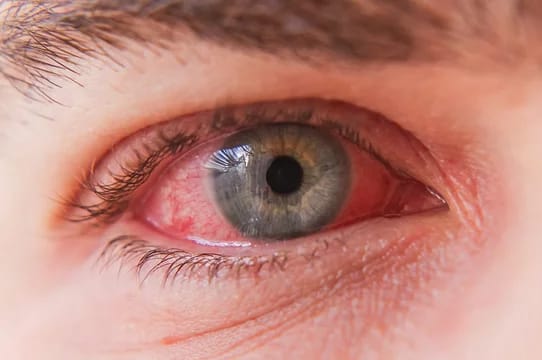
Abstract
Conjunctivitis is a commonly encountered condition in throughout the world. In the management of suspected cases of conjunctivitis, alarming signs- such as severe pain, red eyes, decreased vision, and painful pupillary reaction. Additionally, a thorough medical and ophthalmic history should be obtained and a thorough physical examination should be done in patients with atypical findings and chronic course. Effective management of conjunctivitis includes timely diagnosis, appropriate differentiation of the various etiologies, and appropriate treatment. This article deals with an overview of conjunctivitis,
including its etiological factors, types, clinical features and diagnosis along with homoeopathic management
KEYWORDS: Allergic, Bacterial, Conjunctivitis, Viral, Homoeopathy.
INTRODUCTION
Conjunctivitis is characterized by inflammation and swelling of the Conjunctival tissue, accompanied by engorgement of the blood vessels, ocular discharge, and pain.
It can be acute or chronic and infectious or non-infectious. Acute conjunctivitis refers to symptom duration of 1 to 2 weeks from presentation, whereas chronic is defined as lasting more than four weeks. Conjunctivitis may also be associated with some systemic illnesses, including immune-related disorders, such as Reiter syndrome, Stevens-Johnson syndrome,
Kerato conjunctivitis sicca, nutritional deprivation (especially vitamin A deficiency).
Conjunctivitis is a common cause of eye redness. It can affect people of any age, demographic, or socioeconomic status. More than 80% of all acute cases are generally diagnosed by nonophthalmologists, such as primary care providers, pediatricians, and nurse practitioners.
TYPE OF CONJUCTIVITIS:
1. Viral Conjunctivitis
Viral conjunctivitis remains to be the most common overall cause of conjunctivitis. Many viruses, such as adenovirus, herpes simplex virus, varicella zoster causing conjunctivitis. Viral conjunctivitis spreads easily via touch from person to person, making outbreaks common among children in schools or daycare centers.
2. Bacterial Conjunctivitis
Bacterial conjunctivitis is encountered less frequently and it is the second most common cause of infectious conjunctivitis.
Types of bacteria that cause pink eye include:
- Staphylococcus aureus
- Streptococcus pneumoniae
- Haemophilus influenzae
- Moraxella catarrhalis
- Chlamydia trachomatis
- Neisseria gonorrhoeae
Bacterial conjunctivitis also spreads easily by touch, either through hand-to-eye contact or hand-to-nose contact.
This type of pink eye is more common in adults than kids and occurs most frequently during the winter months.
3. Allergic Conjunctivitis
Allergic reactions occur when our body responds abnormally to an allergen that is otherwise harmless. In this case, mast cells in our eye recognize allergens as foreign invaders and release a chemical called histamine as a defense mechanism. In turn, the histamine causes inflammation and swelling that leave your eyes red, teary, and itchy.
These allergens include pollen, dust, pet dander, mold, or smoke.
CLINICAL FEATURE –
-Viral Conjunctivitis
Common symptoms include red, burning eyes with watery discharge. Viral pink eye generally starts in one eye but can infect both eyes.
-Bacterial Conjunctivitis
Bacterial conjunctivitis results in a red, sore, or painful eye that emits a thick, yellow discharge (pus). There can be a significant amount of pus that may seem to flow despite continually wiping it away. The discharge can become thick enough to cause your eyelashes to stick together.
– Allergic Conjunctivitis
Eye allergies will cause eye to become watery, itchy, red, and inflamed. It can also cause eyelids to become puffy or make eyes sensitive to light. These symptoms usually affect both eyes.
DIAGNOSIS
In most cases, health care provider can diagnose pink eye by asking about your recent health history and symptoms and examining your eyes.
Rarely, your provider may take a sample of the liquid that drains from your eye for laboratory analysis, called a culture. A culture may be needed if your symptoms are severe or if your provider suspects a high-risk cause, such as:
- A foreign body in your eye.
- A serious bacterial infection.
- A sexually transmitted infection.
DIFFERENTIAL DIAGNOSIS:
- Uveitis
- Iritis
- Keratitis
- Scleritis
HOMOEOPATHIC REMEDIES FOR CONJUCTIVITIS:
1. Aconite
It is indicated in the early stages of infections, especially where the inflammation comes on suddenly and violently. The eyes feel hot, dry and gritty, and are sensitive to light.
2. Allium cepa
conjunctivitis with eyes feel similarly uncomfortable, with
smarting, burning and watering. There is an irresistible urge to rub the eyes, and they often appear bloodshot. The eyes are also typically sensitive to light, and the symptoms feel better in open air. there is marked puffy swelling of the eyelids,with burning and stinging pain. The whites of the eyes appear bloodshot and swollen (chemosis).
3. Dulcamara
It indicated in head colds that tend to go to the eyes, resulting in acute conjunctivitis. The eyes become red, and there is a typical thick yellow discharge. The symptoms often come on in or are aggravated by damp weather.
4. Euphrasia
It has a strong affinity for the eyes in homeopathic use, and is indicated in acute conjunctivitis, especially where there is stinging and burning of the eyes, with a thick discharge. The eyes is sensitivity to light and a dry gritty feeling in the eyes.
5. Merc sol
The eyelids are red and swollen with a discharge which is acrid and burning, irritating the eyes. Tears are often profuse, and also burn and irritate. Symptoms are often worse for both heat and cold, and worse at night.
6. Nux vomica
In acute conjunctivitis with bloodshot eyes and intense sensitivity to light, especially where symptoms are worse in the early morning.
The eyelids itch and burn, and they feel better for rubbing.
Symptoms may be accompanied by twitching and blinking of eyes.
7. Pulsatilla
In acute conjunctivitis where the eyelids are inflamed, and especially where there is thick and profuse yellow discharge. The eyes typically itch and burn, causing rubbing. Symptoms are typically worse in the evening, and in a warm room.
Management of conjunctivitis:
- Maintain personal hygiene.
- Avoid rubbing of the eyes.
- Washing eyes with cold water is recommended.
- Avoid coming in contact with allergens if suffering from allergic conjunctivitis.
- If the sufferer uses contact lenses, it is advisable to avoid wearing them while having conjunctivitis.
REFERENCE
- Sati A, Sangwan VS, Basu S. Porphyria: varied ocular manifestations and management. BMJ Case Rep. 2013 May 22;2013 [PMC free article] [PubMed
- Azari AA, Barney NP. Conjunctivitis: a systematic review of diagnosis and treatment. JAMA. 2013 Oct 23;310(16):1721-9. [PMC free article] [PubMed]
- T, Sloane PD. A comparison of eye problems in primary care and ophthalmology practices. Fam Med. 1991 Sep-Oct;23(7):544-6. [PubMed] 4. O’Callaghan RJ. The Pathogenesis of Staphylococcus aureus Eye Infections.
- Conjunctivitis (Pinkeye) Written by WebMD Editorial Contributors. Medically Reviewed by Jabeen Begum, MD on October 13, 2021
- Conjunctivitis Cases Surge In Delhi, 100 Cases In AIIMS Daily; Know The Signs Of This Contagious Eye Infection.
About Author: Dr Kanchan marskole, MD Scholar Batch 2021-22, Department of Practice of Medicine, Government Homoeopathic Medical College and Hospital Bhopal, Madhya Pradesh.


